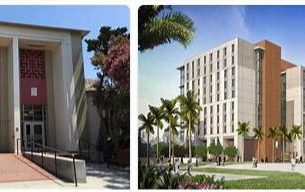There are stereotypes that simply cannot be eradicated. One of them is that Jamaica is primarily perceived through the Jamaican rum.
The Caribbean island of Jamaica is one of the Greater Antilles, which in turn is part of the West Indies. Originally settled by the peaceful Taíno Indians, the island became a center of the slave trade and a pirate stronghold at the end of the 17th century. Today it is a transit point for the drug trade from South to North America and still has one of the highest crime rates in the world. Still, Jamaica is a popular vacation paradise with lots of sun and clear water.
This is also where reggae originated, the most famous representative of which was undoubtedly Bob Marley (1945-1981). The Rastafarian culture, which is characterized by the dreadlock hairstyle, the artistically matted hair that symbolizes a lion’s mane, also originated in Jamaica. Marcus Moziah Garvey (1887 – 1940), the founder of the Rastafarians and the “Back-to-Africa” movement, was a diviner. He prophesied a black king who would free the black people from their oppression. Many African Americans therefore saw the former King Haile Selassie I of Ethiopia as the Messiah.
Unfortunately, with 59 murders per 100,000 residents in 2007, the country has the world’s highest murder rate – followed by El Salvador (55), Guatemala (47) and Venezuela (45).
| Name of the country | Jamaica/Jamaica |
| Form of government | parliamentary monarchy with the Queen of England as head of state |
| Geographical location | Island in the Caribbean |
| National anthem | Jamaica, land we love |
| National holiday | August 6 (the country gained independence on August 6, 1962) |
| Population | about 3 million (Credit: Countryaah: Jamaica Population) |
| Ethnicities | approx. 76% black, 15% mulatto, 1.3% Indian, the rest among other things European and Chinese |
| Religions | approx. 60% Protestants (mainly Anglicans, Baptists and Methodists), approx. 4% Catholics, approx. 1% Rastafari-ans, further followers of natural religions as well as Jews, Muslims, Hindus and Bahais |
| Languages | English and Patois (Creole language) |
| Capital | Kingston with around 700,000 residents |
| Surface | 10,991 km² |
| Highest mountain | Blue Mountain Peak, 2,256 m |
| Longest river | Black River, approx. 70 km |
| Largest lake | there are no lakes to speak of in Jamaica |
| International license plate | YES |
| National currency | Jamaican dollar |
| Time difference to CET | – 6 h |
| International phone code | 001876 |
| Mains voltage, frequency | 110 volts, 50 hertz, adapter required |
| Internet TLD (Top Level Domain) | .jm |
Jamaica: history
Before the year 1000
Between 600 and 900 BC Chr. Were Taíno -Indianer the tribe of the Arawak sailed from areas of today’s Venezuela and Guyana with dugout canoes to the north and the entire Antilles and Jamaica also had settled. They led a peaceful life and ate agriculture and fishing. In the Arawak language, the word “Chaymaka” meant the island of springs.
From the year 1000 to the 16th century
According to Abbreviationfinder website, in the 15th century the Tainó besieged by the less peaceful Caribs, who drove them from many of the Antilles islands, but not from Jamaica. The dispute ended when the Spaniards appeared. On his second trip to the “New World”, Christopher Columbus set foot on May 5, 1494 in what is now St. Ann’s Bay as the first European on the island. On June 25, 1503, on his last great voyage, Columbus beached his two remaining ships, the “Capitano” and the “Santiago de Palos”, which were completely eaten up by the Toredo worm, in today’s St. Ann’s Bay. It was not until June 28, 1504, almost a year later, that he and his men were saved. After his return to Spain he retired to his house in Valladolid, where he died on May 19, 1506, completely lonely and impoverished.
In 1510 the first European settlers came to the island and established an important trading post near “Spanish Town”. In the course of the colonization of the country, the native Indians were enslaved and treated as a kind of “subhuman”. The people, who are very close to their home, family and tribes, often did not survive the terrible treatment. But many also fell victim to the diseases that were brought in, against which they had little resistance. So the native Indians died out and instead of them slaves were introduced from black Africa, whose descendants still live in Jamaica today.
In the 17th to the 19th centuries
From 1655 the English conquered Jamaica against the bitter resistance of the Spaniards. The armed slaves released by the Spaniards in the hope of resistance instead withdrew to the mountains and later became the Maroons. The English-backed pirates in the region played a special role in the clashes between the two colonial powers. These have hijacked Spanish treasure and supply ships for decades. Henry Morgan (1635-1688), who had his base in Port Royal, is particularly well known. He was later knighted by the English for his “merits” and even made governor of Jamaica.
The island was officially taken over by the British in 1670 through the Treaty of Madrid. In 1692 an earthquake completely destroyed Port Royal, the capital of Port Royal, which was notorious as a pirate’s nest and also known as Sin City. The Royal African Company, founded in 1672, made Jamaica one of the world’s largest slave markets.
In the 1730s and towards the end of the 18th century, the so-called Maroon Wars took place between British troops and the Maroons. The reason was that more and more runaway slaves overflowed to the Maroons and attacked the sugar plantations together with them to free more slaves. The most famous leader of the Maroons was probably the former slave Granny Nanny from the Ashanti people.
In 1831 the Christmas uprising took place near Montego Bay under the leadership of Samuel Sharpe, which was bloodily suppressed; however, in 1834 the law to abolish slavery was passed. In the following period cheap workers immigrated from India, among others.
In 1865, under the leadership of Paul Bogle and George William Gordon, another uprising of the black population broke out, which was suppressed with massive violence. Jamaica was declared a British Crown Colony. However, the new governor John Peter Grant initiated some reforms.
In the 20th century
During the Second World War, Jamaica signed a lease agreement with the USA for 99 years for the construction and use of military bases. Just three years later, in 1944, the island received its own constitution. This constitution transferred the regulation of internal administrative acts to a freely elected representation. Jamaica gained independence on August 6, 1962. In 1988 the island was badly devastated by Hurricane “Gilbert”.
Already since the 19th century up to the present day, masses of Jamaicans and residents of the other Caribbean islands have been emigrating to Europe and especially America. Emigration from Jamaica is facilitated by membership in the Commonwealth. In total, there are now more Jamaicans living in London, Toronto and New York than on the island itself.


